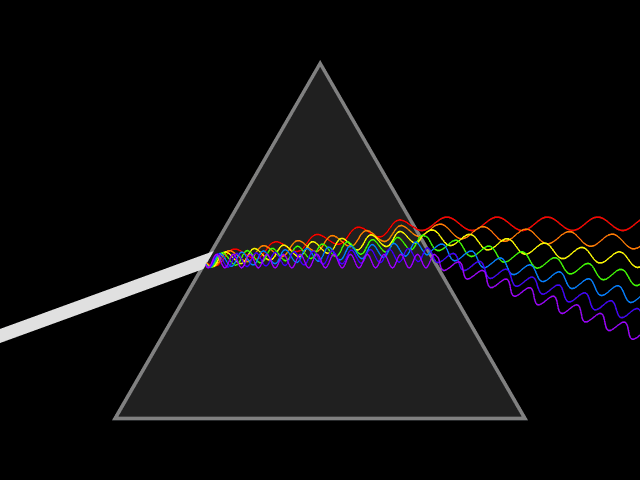It comes to us from millions of miles away. It travels faster than anything else in the known universe. We use it to guide us through the night. We’re surrounded by it so much that you would expect us to know everything about it. However light is more than what meets the eye.
Light is a form of radiation, but we can only see a small portion of it; you know, ROYGBIV, the colors of the rainbow? There are still many forms, such as ultra violet and x-rays, which we cannot see. However, the most interesting things about light are its properties.
Light travels very, very fast: about 300 million meters per
second (671 million miles per hour). Nothing in the known universe can travel
faster than it. We turn on the light in our room and BAM! the whole room is lit
up instantaneously… or is it? Just because something is fast, doesn't mean it’s
instantaneous. We just don’t notice the tiny delay. The light which leaves the sun
actually takes 8 minutes to reach our eyes here on Earth. So if the Sun decided to explode one day, we wouldn't know until 8 minutes after it had happened.
 |
| Light Split into individual waves through a prism Image Source: Wikipedia |
 |
| A Solar Eclipse Image Source: NASA |
As you can see, light really is more than what meets the
eye. When you start asking questions, simple things like light can become more
interesting. So the next time you look up into the sky, ask yourself, “Is that
star still there? Or did it explode already?”

We learned about light acting like a particle in Honors Chem. I think its really cool how light takes up to 8 minutes to reach us from the sun. What would happen if the sun exploded? Would we die from the radiation or would we eventually freeze to death?
ReplyDeleteAfter the sun exploded, we would still be fine for 8 minutes but once the radiation from the sun hit us, we would all be fried.. then it would be cold.
DeleteSo light is a wave and a particle, so it can bend or go in a straight line at the same time.. Light is like BC Calculus; very, very confusing.
ReplyDeleteIt is both at the same time until you look at it. Then it will act however you want it to act. A bit like Schrodinger's Cat. You don't know if its dead or alive until you look at it.
DeleteI love how people just assume that light is instantaneous, as in light doesn't have a travel delay. In actuality, there are stars we look at that may have exploded 100 years ago, but we still see them shining bright.
ReplyDeleteThat is exactly correct!
Delete